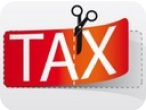Apr 30, 2025
US Economy Faces Grim Outlook: Worst Quarter Since Covid
BusinessUS Economy Faces Grim Outlook: Worst Quarter Since Covid
US Economy Faces Grim Outlook: Worst Quarter Since Covid
The first quarter of 2025 has brought alarming news for the US economy, as latest reports reveal it has experienced its worst performance since the peak of the COVID-19 pandemic. With tightening financial conditions, inflationary pressures re-emerging, and a workforce still reeling from the effects of previous economic shocks, the landscape ahead appears daunting for consumers and businesses alike.
As we navigate through this troubling economic state, it is crucial to understand the key factors driving these disappointing GDP figures:
- Inflationary Pressures Resurfacing: After a brief period of stabilization, inflation has crept back into the economy, revising previously optimistic forecasts for growth.
- Consumer Spending Decline: As prices rise, consumer spending has shown a significant downturn, reflecting growing concerns over disposable income.
- Interest Rate Hikes: The Federal Reserve's continued interest rate increases in response to inflation have further curtailed economic activity, hampering business investments and consumer loans.
- Weak Employment Growth: While job creation has remained steady, wage growth has not kept pace with inflation, contributing to a sluggish confidence among American workers.
- Supply Chain Disruptions: Unresolved logistics and production challenges from prior years are still impacting various sectors, leading to shortages and increased operational costs.
According to recent data, the GDP shrank significantly by 1.2% in Q1 2025. This contraction marks a stark contrast to earlier forecasts that anticipated modest growth. Experts suggest that the compounding effects of inflation and high interest rates have negatively impacted both consumer and business confidence.
The Impact on Consumer Behavior
As inflation rises, consumers are tightening their belts, which has a cascading effect on the overall economy. Discretionary spending is seeing a noticeable decline, as households prioritize essential goods and services over non-essential purchases. Key observations include:
- Increased Savings Rate: Many households are shifting their financial strategies towards saving rather than spending, in anticipation of further economic instability.
- Shift in Spending Habits: From dining out to online shopping, consumers are becoming more price-sensitive, opting for bargains and lower-cost alternatives.
- Decline in Retail Sales: Brick-and-mortar stores are grappling with decreased foot traffic, directly impacting revenue growth and causing retailers to rethink their business models.
Business Challenges Amidst Economic Contraction
Businesses are not immune to the fallout from the economic downturn. With reduced consumer demand and increased operational costs, companies face a complex landscape. Here are some challenges they are encountering:
- Reduced Investments: Many businesses are pulling back on capital expenditures as uncertainty looms, affecting growth potential.
- Operational Costs: Escalating costs associated with raw materials and labor are squeezing profit margins, prompting companies to reassess their pricing strategies.
- Layoffs and Hiring Freezes: In response to financial strain, firms are beginning to implement layoffs and pause hiring, exacerbating the employment landscape.
Looking Ahead: What Does This Mean for the Future?
The confluence of factors affecting the economy suggests we may be in for a duration of challenging times ahead. Economists warn that without effective policy changes, the recovery could be slow and arduous.
As policymakers and economic leaders evaluate potential responses, there's hope that strategic adjustments could reverse the current course. Here are potential pathways toward recovery:
- Targeted Fiscal Stimulus: Financial support for sectors most impacted by inflation and ongoing supply chain issues could help stimulate growth.
- Investment in Infrastructure: Boosting investments in infrastructure could create jobs and invigorate local economies.
- Monetary Policy Adjustments: Depending on inflation trends, a reevaluation of interest rates may be warranted to promote economic activity.
- Encouraging Consumer Confidence: Transparency and communication from leaders regarding the state of the economy can help rebuild trust and spending.
- Focus on Long-term Growth: Shifting from short-term fixes to sustainable, long-term strategies will be crucial for robust recovery.
The current economic situation undoubtedly paints a grim picture for many Americans. However, historical trends reveal that recovery is always possible, though it may require collective efforts from policymakers and stakeholders across various sectors.
Want to Save Money on Taxes? Don't miss out on a chance to keep more of what you earn! At Together CFO, we focus on smart tax strategies that last Structures Over Loopholes. Schedule a call with us today to find out how we can help you pay less in taxes. It's simple and free to get started. Click here to book your consultation now!
To learn more about our services and how we can assist you with your financial goals, visit our homepage: .
Stay connected
Schedule a free consultation to discuss your goals with an expert
Subscribe
The Tax Bloke
Subscribe to learn about new product features, the latest in technology, solutions, and updates.
Resources
Read further
Discover our Podcast
Our expert guests provide valuable insights, tips, and advice, as well as engaging stories and thought-provoking discussions that will leave you with a newfound appreciation and understanding of business.



Join our Community
Discover useful tax saving strategies and advice from experts and fellow members. Our FREE community resources and support help you boost your tax savings, allowing you to retain more of your hard earned money for your family.